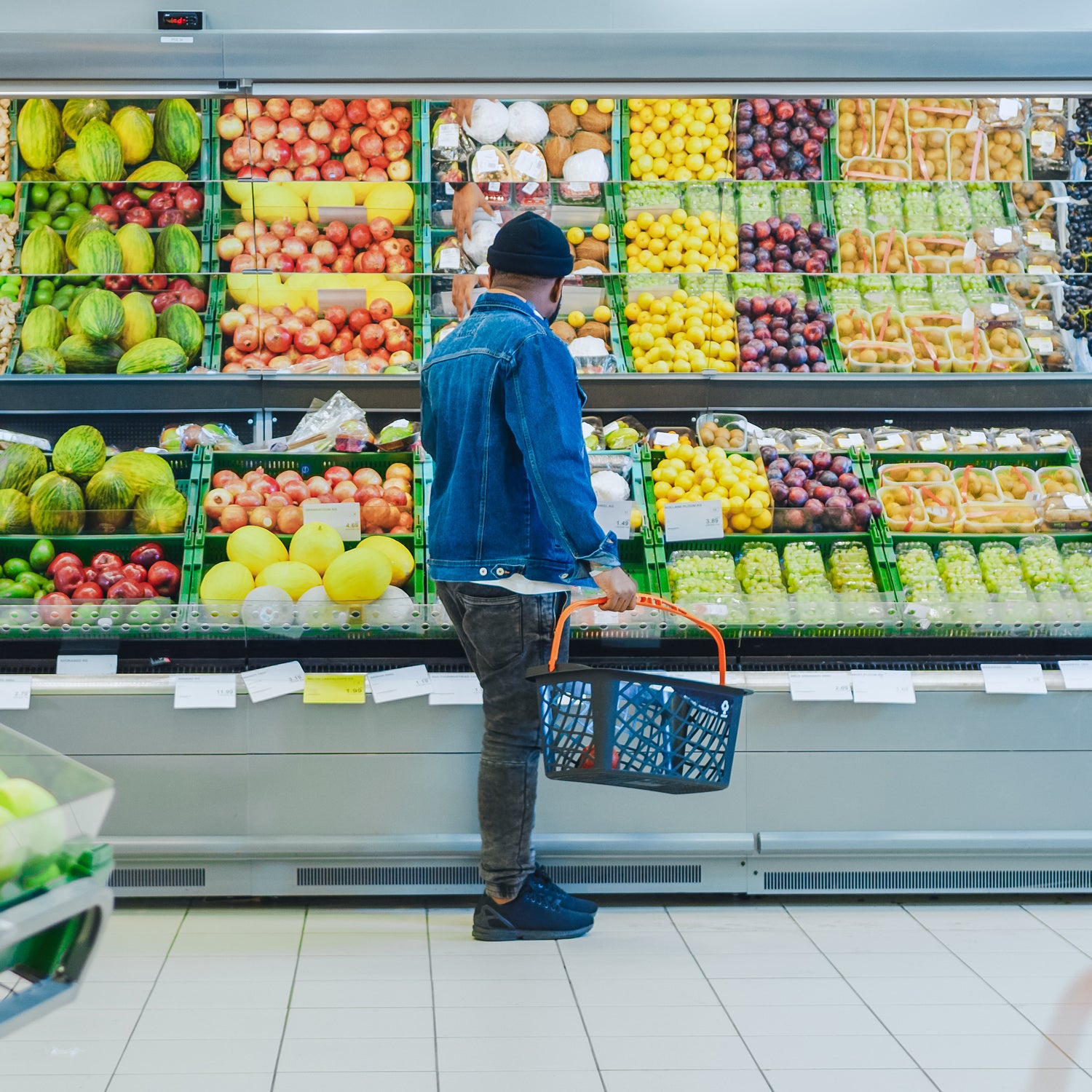“Shop online and get free pickup!”��It was two weeks before Christmas, I was overwhelmed, and in my inbox��was a tempting offer from my nearest Kroger.
Here was my magic ticket to a more productive Saturday, I thought, clicking with a ferocity normally reserved for cute cat videos.��
The offer I received is a small part of a larger trend, as grocery stores look to expand home-delivery and curbside-pickup options.��Walmart is trying to lead the way. It announced the from 1,400 stores in��fall 2019��and��began offering curbside booze pickup at 2,000 . Target and Amazon—which owns��Whole Foods—are right on its speedy delivery heels, according to����from investing site the Street.��
Which made me wonder: Is this the beginning of the end of regular shopping trips to the grocery store?��And does it matter?��
The modern supermarket, with its gleaming cheese counter and��vast array of fresh produce, is an integral part of cooking good, wholesome food. Maybe I’m biased, because I think about food constantly��and therefore, to me, the��grocery store is a place of possibility and wonder. Maybe it has something to do with living in a rural place, where my closest option is a Walmart—and even that grocery store is in peril��.
There were a few problems with my online order. When I arrived, the store had subbed in a bunch of items for things it was out of. Some of them were not what I would have chosen. And each item came in its own plastic sack—literally, one bag per thing. Finally, a computer glitch had added four quarts of half-and-half to my order. I like cream in my coffee, but that was three more quarts than I needed. Twenty minutes later, I was still trying to get my order sorted.
I’m sure the service will get better. However, I worry about what may happen in the process of investing heavily in getting online ordering right. Profit margins in this industry are anemic. It’s really a volume game, says , a chef, food writer, and the author of the 2017 book . He interviewed the proprietors of one small grocery chain in Cleveland��about its profit margins. The owners relayed that their business makes about 32 cents for every dollar of goods they sell. For grocery stores, this is on the high side, Ruhlman reports. Some large chains make just 25 cents on every dollar spent.
If your favorite store is hiring delivery drivers and extra staff to fill orders, it’s��likely cutting from some other part of the��business. And if delivery turns out not to be the next big thing? Well, it’s possible some smaller retailers will go under in the process. With such slim margins, there’s just not a lot of room for spending in areas that don’t end up being profitable wins.��
Ruhlman, like me, worries about this. He remembers when his favorite neighborhood video store closed. Suddenly, he’d lost access to employees who gave him great film recommendations. A good market should do the same, with a butcher who can tell you how to roast a rack of lamb��and a fishmonger who can tell you why right now isn’t the time to be buying salmon. Sure, you can Google instructions for these things, but your online search isn’t stoked when you’ve returned a week later to��report back on the gloriousness of your feast. Plus, the internet has no idea where your rack of lamb came from. And it doesn’t care.
Speaking of the internet, the Instacart model—where a user orders through the app and a driver picks it up and delivers it—seems like a less risky option for grocers. But the company has , with one analysis showing that half of its employees made less than minimum wage, which contributes to ��like social stratification.
Moreover, when you order��groceries via an app and have them delivered, you’re missing��out on the primary benefit of grocery stores: supermarkets are an integral ingredient in the��glorious, messy stew that is a community. They give us a place to learn about foods that are new to us. They teach us that wintertime tomatoes are never as good as the local ones offered in July. They have community bulletin boards and enable��neighborhood��Boy Scouts and Girl Scouts to learn about entrepreneurialism as they peddle their wares outside—even though the store itself sells competing merchandise. They make us crawl out of bed when we’re��at our lowest but really need a pint of ice cream. And sometimes, when you’re��ringing up that pint of ice cream, a friend just happens to be in front of you ringing up a bottle of wine, and suddenly you’ve got plans to self-soothe together.
In other words: grocery stores have all the things we need. More importantly, they have all the things we never knew we needed. And that has to be worth something.
Of course, if ever there were��an argument for click-and-deliver groceries, it’s families with young children. “I absolutely avoid taking both my children to the grocery store, because when I do, it’s totally a shitshow,”��says Virginia Sole-Smith, author of , a book on America’s obsession with diet culture. For parents, not having to deal with a meltdown on aisle three is a godsend. And if it helps you get through parenting young kids, use it, she urges.
Supermarkets are an integral ingredient in the��glorious, messy stew that is a community.
But you may not want to avoid the grocery store forever. Children learn how to interact with food from their parents, says Sole-Smith. “At some point, you’re going to have to teach your kid how to shop.”��Also, if you’ve ever seen your toddler slam a fistful of a free sample into his mouth when he’d never touch the same thing at home, you know there’s something about the grocery store environment that emboldens even picky eaters. “It isn’t as loaded with pressure as it is at home, like, please try this food that I lovingly made for you,”��she explains.
One area where online shopping does seem like it could help is lowering food waste. Ugly fruit—or really even just slightly imperfect produce—often gets passed over. The apples I got in my online order were definitely not as flawless as the ones I would have chosen myself. However, a����published in the��Journal of Retailing and Consumer Services��found that online shopping might be worse for food waste. The authors posit that because the food is easier to procure, it has less value to the consumer, and so chucking it doesn’t cause as much heartache.
Plus, there’s no doubt that click-and-ship orders are much, much worse when it comes to plastic waste. Until someone devises a system like the old-timey milkman, where you can return your empty glass containers and have them refilled, delivery is a single-use nightmare. You can’t ask them to pack things in your reusable��bags, and you can’t opt for the bulk-bin almonds versus the plastic bag of almonds. And when there’s a choice of a plastic carton or a paper one, I’ll almost always choose the product in paper—though it’s hard to tell, when shopping online, exactly what cartons are made from.
Ruben Nazario, research director at the market research company PRS In Vivo, doesn’t think grocery stores are going anywhere. To him, online ordering is just an addition, not a replacement. He points to Hema, a Chinese mega mart, as the hybrid model that may soon be the go-to design in the U.S. At Hema, you can shop in store or online, with free 30-minute delivery available for the latter. Hema is part of the online retail giant Alibaba, so it does this really well, says Nazario. It also has restaurants and bars, so it serves as a community gathering place. (Which, of course, some places like Whole Foods offer already). But the main point is that it’s huge, it covers all the bases, and because it has a little of everything, it’s built to withstand the slim margins of Grocery Land.��
But sleek retail spaces—and employees to staff them—are expensive. With profits being so slim, it’s easy to see how some brands might consider checking out on brick-and-mortar stores entirely. This seems especially likely in areas that haven’t traditionally been home to lucrative grocery markets, like low-income neighborhoods and rural towns.��
And so��I’ll finish this piece with an appeal. It’s��great to spend more time outside. But if you like coming in at the end of the day to a luscious soup in your Crock-Pot��and a salad full of interesting vegetables, it’s worth spending some time inside your neighborhood supermarket.


